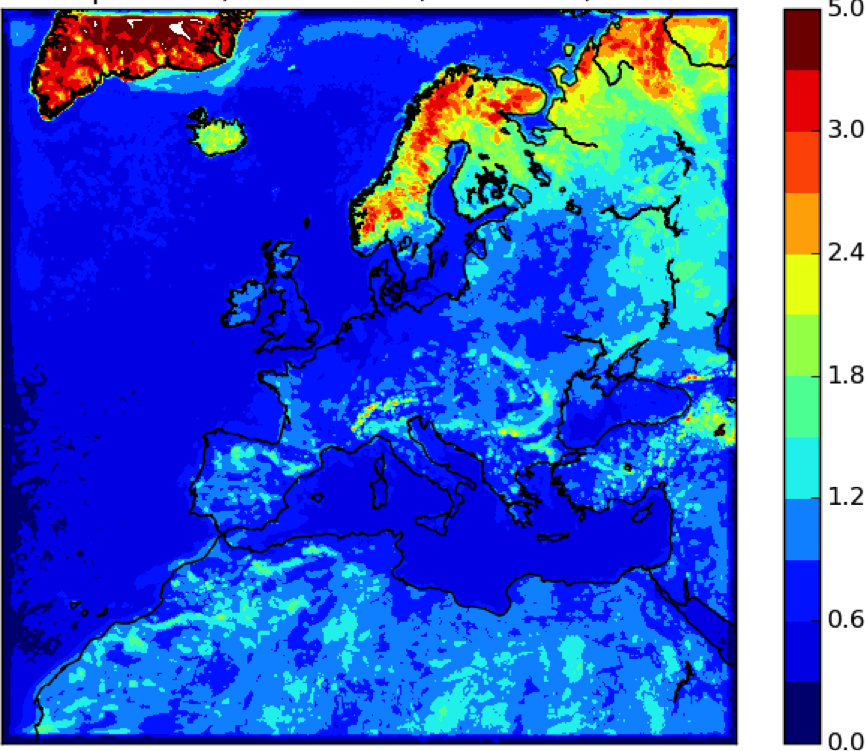Linden Ashcroft, Digitising Sub-Daily Weather Observations in Europe to Improve Climate Reanalysis7/23/2016 Reanalyses are educated estimates of how the atmosphere behaved in the recent past. They are built by combining computer models of the atmosphere and ocean with weather observations to build an approximation of what the entire atmosphere was doing every six hours or so. Climatologists and meteorologists all over the world use reanalyses to research our climate and weather. Most of the reanalysis products that exist cover the entire planet, but if you want to study storms over Paris for example, or wind changes in the Spanish Pyrenees, then it’s better to use a regional reanalysis, which has a higher spatial resolution. Uncertainties in Ensembles of Regional Reanalysis (UERRA) is a European Union-funded project that aims to build better regional reanalyses for Europe and the Mediterranean.
One part of UERRA is focused on recovering historical weather records that have a high temporal resolution (more than once a day) for regions that currently have poor data coverage. This is because one of the requirements for high-quality reanalysis is a lot of high-quality observations. The more observations you have, the better your estimation of the atmospheric conditions will be. So far, UERRA and its partner national meteorological services have recovered over 8 million observations from 15 different countries, including Egypt, Slovenia, Germany and Romania. The observations range from snowfall totals on high mountaintops, to wind observations from the late 19th century in the Sahara, to relative humidity along the Mediterranean coastline. Our task now is to check the quality of these values before using them to build and verify the next generation of reanalyses for Europe.
14 Comments
4/6/2018 02:58:27 am
Absolutely fantastic posting! Lots of useful information and inspiration, both of which we all need!Relay appreciate your work.
Reply
10/27/2022 10:33:52 pm
Thanks to your posting, my questions have finally been solved. The review of this topic, which started out simply out of curiosity, finally came to a wonderful conclusion. I recommend that you check my posts related to this on my blog. 메이저토토사이트
Reply
It's a great post. I've always been checking this blog, and I'm touched! In particular, the last part is very useful information, and I like it very much. I've been exploring this particular information for a long time. Thanks to this blog, my expedition is over. 토토사이트
Reply
The model website where you will find additional places is definitely funny on top of the feature. It once again schedules everyone to click on the sanctuary encore. I definitely need to snatch the models' feasts in time so that I can get up to date with any kind of information. 메이저토토
Reply
11/1/2022 08:56:25 pm
This post is awesome. I love this post so much that I'm going crazy. It's one of the best posts I've read recently. Thank you so much for writing such a good article. 메이저토토
Reply
jaeseu
1/13/2023 08:29:29 pm
Thanks for such a pleasant post. This post is loaded with lots of useful information.
Reply
Good info. Lucky me I came across your website by accident
Reply
에볼루션
8/10/2023 04:26:27 am
His agent and mother Fayza Lamari, his lawyer Delphine Verheyden, PSG's Football Advisor Luis Campos and representatives Christophe Henrotay and Kia Joorabchian - who have previously been instrumental in deals involving Real Madrid - have all been cited as potentially key figures in unlocking a move to the Bernabeu.<a href="https://sbs0000.com" target="_blank" alt="바카라사이트"></a>
Reply
에볼루션
8/10/2023 04:27:50 am
Money is the fix-all grease for any cog in a deal, but occasionally less-wealthy clubs can find other trump cards to play.<a href="https://sbs0000.com" target="_blank" alt="에볼루션카지노"></a>
Reply
Leave a Reply. |
Archives
August 2021
Categories |


 RSS Feed
RSS Feed